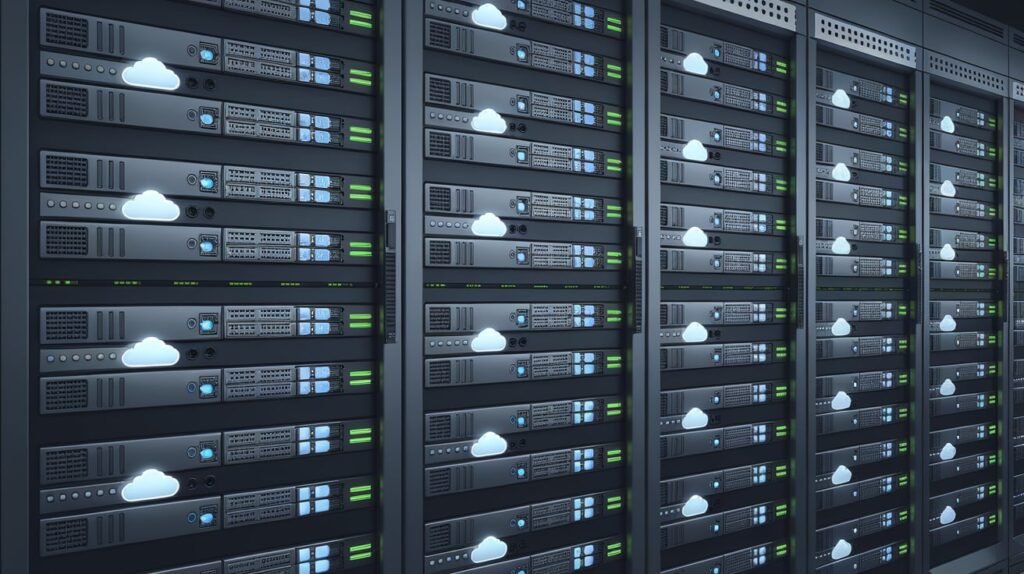Please read, share and follow us
What is Cloud Computing?
Cloud computing is a term you’ve likely heard, but what does it actually mean? To put it simply, cloud computing is about accessing services like storage, software, or processing power over the internet rather than having them physically on your computer or device. It’s like using someone else’s computer system, but you get to use it from anywhere. This topic would be a series, and this is the first chapter I would call Cloud Introduction.
Imagine you want to watch a movie at home. You have two options: either buy the DVD or stream it on Netflix. If you buy the DVD, you can only watch it at home on a DVD player. But if you stream it on Netflix, you can watch it on any device, anytime, as long as you have an internet connection. This is the idea behind cloud computing.
In traditional computing, everything is stored and run on your own computer or server. But with cloud computing, services and data are hosted on the internet (which is the cloud), and you can access them from anywhere. This flexibility makes life easier for businesses and individuals alike.
Example: Think of how Google Drive lets you store files online. You don’t need to carry a USB drive or store files on your personal computer anymore. Wherever you go, as long as you’re connected to the internet, you can access your files.
Types of Cloud Services

When we talk about cloud computing, it’s important to understand that there are different types of cloud services, each designed to meet specific needs. The three main types are Infrastructure as a Service (IaaS), Platform as a Service (PaaS), and Software as a Service (SaaS).
1 Infrastructure as a Service (IaaS)
IaaS is like renting the basic tools you need to build something. Imagine you want to open a bakery. Instead of buying a building and ovens, you rent them. In cloud computing, IaaS allows you to rent computing resources, like virtual machines, storage, and networks, without having to maintain the physical hardware.
Example: Amazon Web Services (AWS) provides services like EC2, where companies rent virtual servers to run applications instead of buying and managing physical servers.
2 Platform as a Service (PaaS)
PaaS is a bit more advanced. Instead of just renting the building and ovens, you rent a fully equipped bakery where you can start baking right away. PaaS provides platforms where developers can build, test, and deploy applications without worrying about managing the underlying infrastructure.
Example: Microsoft Azure offers PaaS solutions, such as Azure App Service, that let developers focus on building applications rather than maintaining servers.
3 Software as a Service (SaaS)
SaaS is the most familiar to most people. It’s like subscribing to a service where everything is done for you. You don’t need to own or maintain anything. You simply use the service.
Example: Gmail, Google Docs, and Netflix are examples of SaaS. You just use the software directly via the internet without worrying about how it works behind the scenes.
Benefits of Cloud Computing
Why do so many people and businesses move to the cloud? Here are some of the main reasons:
1 Flexibility
With cloud computing, you can access your files, software, and applications from any device as long as you’re connected to the internet. This makes remote work, collaboration, and global access easier than ever.
Example: A team working on a project can collaborate using Google Docs, where everyone can edit the same document in real-time, regardless of location.
2 Cost Savings
One of the biggest benefits of cloud computing is cost savings. Instead of buying and maintaining expensive hardware, you only pay for what you use in the cloud. This is similar to paying for utilities like electricity, there’s no need to build your own power plant and transport your energy, when you can just pay for the electricity you use.
3 Scalability
As your needs grow, the cloud grows with you. Whether you’re running a personal blog or managing a large enterprise, cloud computing lets you easily scale up (or down) without having to make huge investments in hardware.
Example: An e-commerce website experiencing a surge in traffic during the holiday season can quickly increase its server capacity without buying new physical servers.
4 Disaster Recovery
With traditional systems, if your computer crashes, you could lose important data. With the cloud, your data is stored securely across multiple locations. Even if one server fails, your data is still safe.
Example: Storing photos on Google Photos ensures that even if you lose your phone or computer, your photos are safe and retrievable.
Traditional Computing vs Cloud Computing
- Traditional Computing: You buy and maintain your own hardware (like owning a DVD collection).
- Cloud Computing: You access resources over the internet (like streaming movies on Netflix, accessing documents on Google Drive).
Types of Cloud Services (IaaS, PaaS, SaaS)
| Service Type | Description | Example Providers |
| IaaS | Rent virtual machines or storage | AWS, Google Cloud, Microsoft Azure |
| PaaS | Platforms to build and deploy apps | Microsoft Azure, Heroku |
| SaaS | Software you use directly | Gmail, Google Docs, Netflix |
In conclusion, cloud computing is a revolutionary technology that makes accessing computing resources easier, cheaper, and more flexible. Whether you’re an individual looking to store personal files or a business seeking to scale operations, cloud computing offers a range of services that meet different needs. From infrastructure and platforms to software services, the cloud enables you to do more with less, all while accessing everything from anywhere.




